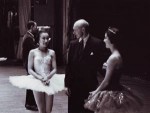Column Name
Title
The following events in Juilliard’s history occurred in February:
Body
1919 February 22, Joseph Fuchs performed Nicolò Paganini’s Violin Concerto No. 1, Op. 6, in a public recital given by students of the Institute of Musical Art, Juilliard’s predecessor institution. Fuchs was a member of Juilliard’s faculty from 1946 until his death in 1997.
1941 February 1, the Juilliard Orchestra presented a program in memory of Augustus D. Juilliard. Led by Albert Stoessel, the orchestra performed Ernest Chausson’s Le poème de l’amour et de la mer, Op. 19, with soprano soloist Florence Page Kimball; Dmitri Shostakovich’s Symphony No. 10; Carl Maria von Weber’s Overture to Oberon; Paul Dukas’s L’apprenti sorcier; and Bernard Wagenaar’s Violin Concerto, with violinist Meroslow Salyk and the composer conducting.
1957 February 7, Juilliard officially accepted an invitation to join Lincoln Center for the Performing Arts as its educational constituent. President Eisenhower broke ground for Lincoln Center in 1959, and Philharmonic Hall, the first section of the complex to be completed, opened in 1962. As part of Juilliard’s move from Claremont Avenue in Morningside Heights to Lincoln Center, an agreement was made to develop a training program in drama, which led to the establishment of the Drama Division in 1968. In 1969 the School relocated to Lincoln Center.
1961 February 6, the Juilliard Dance Ensemble performed excerpts of Marius Petipa’s Sleeping Beauty, directed by Antony Tudor. The program was a joint concert with the Philadelphia Orchestra, conducted by Eugene Ormandy, at the Academy of Music in Philadelphia. Among the dancers were Bruce Becker, James Flowers, Chieko Kikuchi, Beatrice Lamb, William Louther, Myron Nadel, Linda Shoop, Koert Stuyf, Carl Wolz, and alumni Ilona Hirschl and Jennifer Masley. Also on the program were excerpts from Wagner’s Das Rheingold and Verdi’s La Traviata, with Curtis Institute students Patti Jean Thompson and Rodney Stenborg as soloists.





